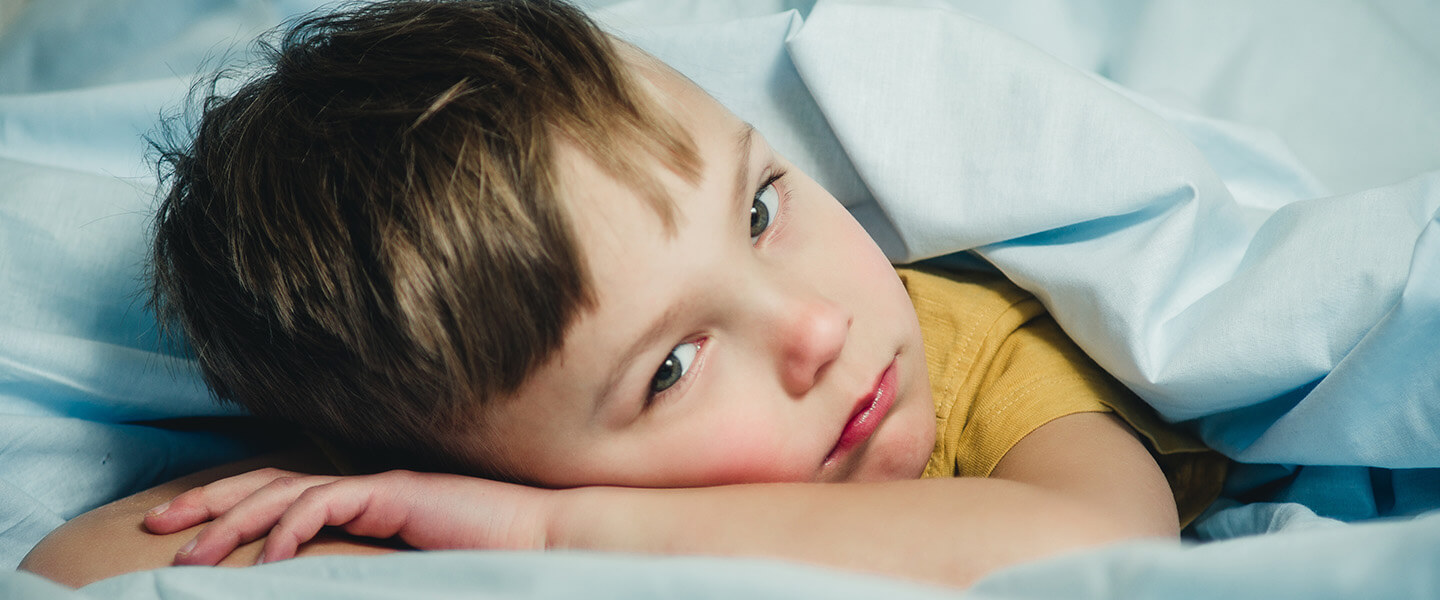Relation Between Daily Mood and Sleep in Preschool Children Highlights Importance of End-of-Day Mood
Relation Between Daily Mood and Sleep in Preschool Children Highlights Importance of End-of-Day Mood

Common sense suggests there is a direct relationship between mood and how we sleep. When we are disturbed emotionally, for example, we may expect this to impact our sleep: how long we sleep during the night; how often we awaken; and whether or not the sleep that we do get prepares us to function effectively the next day.
Many studies have borne out the particularities of the sleep-mood relationship, but they have mostly been conducted with adult and adolescent subjects. Very little research has so far been conducted in young children concerning the specifics of how changes in daily mood impact the length and quality of sleep.
Adult experience—with child-rearing—offers grounds for conjecture: a cranky child may be expected to sleep poorly; but is this always the case? How do fluctuations in mood, both positive and negative, throughout the course of a given day, impact the sleep that a preschool-age child (aged 3 to 5) will actually get? How do such daily mood fluctuations impact the next day’s mood and ability to function? How much do these relationships vary in individual children over time? Assuming daily mood patterns affect the sleep of some children much more than others, is there a way to figure out who these more susceptible children are, and can we try to lessen any harmful impacts that daily mood fluctuation has on the sleep of these young children and their next-day mood?
These were among the questions that motivated a study at Washington University in St. Louis led by 2022 BBRF Young Investigator Caroline P. Hoyniak, Ph.D. She and her team, which included Joan L. Luby, M.D., a BBRF Scientific Council member, three-time BBRF grantee and two-time BBRF prize winner, recently reported their results in Sleep Health: Journal of the National Sleep Foundation. The data upon which the results are based were collected by Diana Whalen Ph.D., also of Washington University, who also co-authored the new paper.
“To our knowledge, no studies have explored the day-to-day impact of poor sleep on affect in early childhood,” the team wrote, noting that sleep disturbances affect about 25% of all children, “and contribute to increased risk for chronic health conditions, poorer cognitive abilities, and heightened psychopathology,” including increased risk for depression and anxiety disorders.
There has been a gap in research for a variety of reasons. First, early childhood is a period of high emotional expressivity and “emotion dysregulation,” or what laymen might call acting out. This is most evident in preschoolers and typically decreases over the course of childhood, as the brain develops self-regulatory capacity. Yet the differences between individual children can be great, and it has been hard to measure their moods as they fluctuate over the course of a day. The new study made use of a technology called actigraphy, which is also used in smartphone-based sleep-monitoring apps. Actigraphy relies on small changes in bodily acceleration and fine motor movements to register likely disturbances in sleep. In the study by Dr. Hoyniak and colleagues, each participating child wore a wrist band that contained an accelerometer to provide data on sleep duration, sleep timing, and sleep activity (including interruptions).
This objective sleep data collected over one week’s time was complemented by subjective data, gathered from primary caregivers of each child enrolled in the study. Each caregiver downloaded an app to their cellphone and was asked to respond to prompts sent them by the research team about their child’s mood four times daily (morning, afternoon, evening, and end of day) for the 7 days of the study. Providing what the researchers call “ecological momentary assessment (EMA),” the caregivers rated how happy, energetic, excited, sad, angry, and worried their child was at each time point. About 75% of the prompts were heeded.
One hundred-fifty children and caregivers were initially enrolled in the study, which was partly interrupted due to the COVID pandemic. Ninety-nine children provided usable actigraphy data, 87 of whom also had useful corresponding caregiver-generated EMA data. In all, 133 children had usable EMA data.
In broadest terms, the study provided evidence of a “dynamic, bidirectional relationship” between sleep and daily mood in preschool children. On average, children with more sleep disturbances also had more disturbances in mood the following day. The evidence separately indicated an effect of daily mood on that night’s sleep.
The data showed that on average, children with poor sleep quality had more negative and less positive affect the following day. This may have particular importance: given the association in past studies (with adults and adolescents) between disrupted sleep and later development of depression or anxiety, the researchers speculated that “sleep disruptions may be one risk pathway in the development of internalizing pathology.” Internalizing disorders such as depression and anxiety are those in which symptoms (such sadness or anhedonia) are directed inward and experienced internally—in contrast with externalizing disorders in which symptoms such as anger are directed outward, at others.
Another result of the study: EMA data gathered from caregivers enabled the team to explore how changeability of their child’s affect throughout the day was associated with the child’s sleep. They found that shorter sleep duration, on average, was associated with increased variability in positive affect the next day. Such variability, called “lability,” is one index of mood instability, even though the behaviors in question (happy, energetic, excited) are nominally “positive.” “Lability of expressions of high positive affect in early childhood, often termed excitability, is associated with dysregulation and externalizing pathology,” the team explained. “Our findings highlight that sleep disturbances may contribute to increased displays of positive affect lability, a finding potentially relevant to early detection of excitability and mood-cycling disorders,” such as bipolar illness.
Taking this one step further the team noted: shorter nighttime sleep duration resulting in increased lability of positive affect the next day could, in turn, lead to shorter nighttime sleep durations that evening, thus tending to perpetuate shorter sleep time and increased excitability. Among the implications: “Ending the day with activities that promote positive and minimize negative affect could be key to enhancing sleep in young children, especially given that many families experience conflict around bedtime.” Examples of promoting positive affect include: enhancing the quality of interactions around bedtime via integrating positive and security-inducing activities and increasing parental emotional availability, the team said.
On the subject of screen-viewing prior to bed, the team noted that content that is negative or emotionally activating, such as violent or frightening content “might be disruptive to sleep via increases in negative affect at bedtime” and thus might well be avoided where possible.
In conclusion, the team said their findings “highlight the importance of considering both sleep and affect in early-childhood interventions, since promoting positive affect may enhance sleep quality and vice-versa.”




